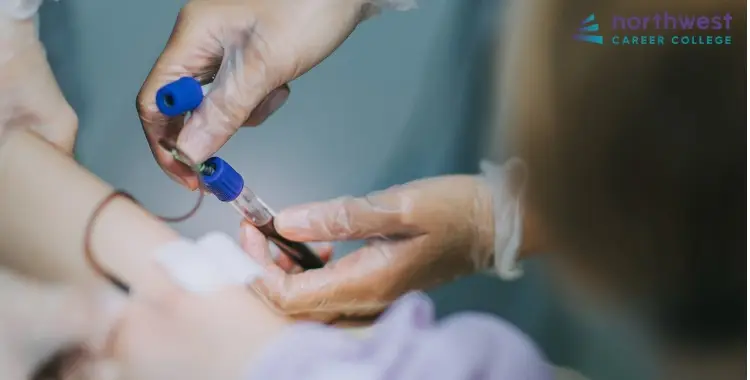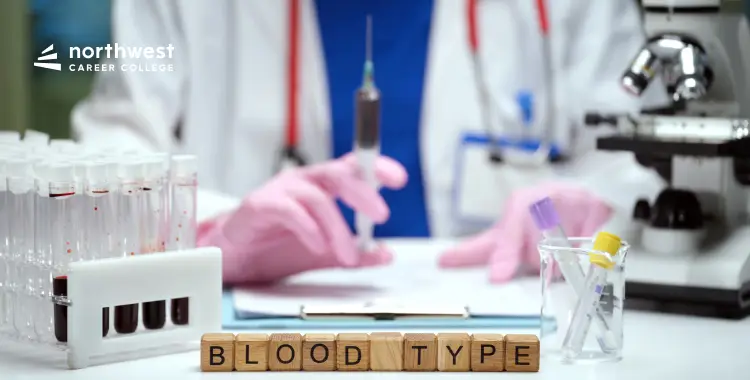Importance of Patient Communication and Comfort in Phlebotomy
- June 14, 2024
- 4.0k views
- 4 min read
Phlebotomy is the withdrawal of blood for diagnostic or therapeutic reasons, and it is a routine medical procedure. However, it can be distressing to some patients if they have anxiety associated with medical procedures.
A phlebotomist does more than collect blood; they should also ensure the patient’s comfort during the process. The article examines the importance of these two aspects within phlebotomy and how they promote positive outcomes and patient satisfaction.

Table of Contents
Making the Patient More Comfortable
A patient’s comfort during a phlebotomy procedure is not just a courtesy but an integral part of the procedure. Patients are more likely to remain still when they are comfortable, and administering the blood draw quickly reduces the risk of complications such as hematoma or multiple needle insertions.
Pain and Anxiety Alleviation
Patients may exhibit anxiety when needles or blood draws are involved. Proper techniques aimed at reducing patient discomfort, such as the use of a warm compress to make veins more accessible and distraction techniques, can effectively mitigate this aspect of patient anxiety. More so, clear communication on the expectations of such procedures may remove the halo of fear.
Adapt to Patients’ Need
Patients are people with their own needs and concerns. Some may have trypanophobia (the fear of needles), whereas others may have formed a history of earlier negative experiences with blood draws. This calls for the ability of the phlebotomist to scan for such cues and react to what the patients are saying or trying to say. It could require taking extra time to explain what they are doing to a somewhat nervous patient or emphasizing the speed and efficiency of the collection for a patient who is short on time.
Ensuring Physical Comfort
One way to ensure a patient’s comfort during a phlebotomy procedure is through the physical setup. It’s essential to consider factors such as providing a comfortable and cushioned seat for the patient and ensuring a clean and quiet environment. These elements contribute to a more positive patient experience.
The Importance of Effective Communication
Adequate two-way communication is the basis of any clinical procedure. Good communication not only helps reduce the patient’s level of anxiety but also raises the chances of a successful procedure.
- Pre-procedural communication: The phlebotomist should introduce themselves and their role to the patient before the procedure commences. This is also the time to question the patient about any past incidents with blood draws and any fear they might have about it, and get the opportunity to learn about their health during that time.
- During the Procedure: Effective communication should be maintained during the procedure. In addition, it may help to speak to or reassure the patient through small talk to keep the patient at ease.
- Post-Procedure Care: After drawing blood, you are expected to provide your patient with post-instructions, such as applying pressure to the site to prevent bruising. You should also check in with the patient to see if they have any questions now that the procedure is complete and what to expect regarding medical follow-up care.
Phlebotomy and Empathy Training
Phlebotomists should be trained in empathy to best appreciate and respond to a patient’s feelings and physical condition. Being patient-centered is very important in that kind of procedure, and many find it disturbing.
Continuing needs include ongoing education regarding the latest phlebotomy best practices and methods of effective patient communication. Ongoing feedback, including sessions and peer reviews, helps identify areas for improvement.
Conclusion
The technical aspect of phlebotomy involves drawing blood safely and efficiently. However, one of the most important aspects is communication with the patient and making them feel comfortable. These aspects greatly influence a patient’s experience and perception of their care. Attention to these details will ensure successful procedures and create a more compassionate and accessible medical environment. Phlebotomy is not just about needles and tubes; it’s all about human connection, trust, and care.





